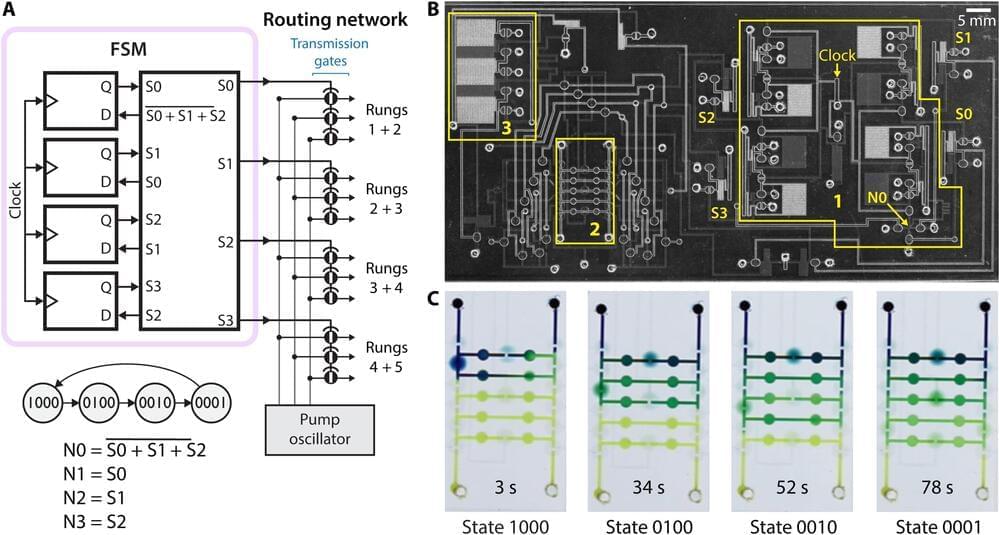A group of biochemical engineers, Siavash Ahrar, Manasi Raje, Irene Lee and Elliot Hui at the University of California, Irvine, has developed a finite state machine (FSM) implemented as a pneumatic circuit using microfluidic valves to build a lab-on-a-chip. Their work is published in the journal Science Advances.
Over the past several years, biochemical and mechanical engineers have been working toward the goal of automating many of the chemical process that are currently done by hand—trained lab technicians using pipettes to determine the concentration of a chemical dissolved in a liquid, for example. Automating such tasks would not only make them less expensive, it could speed things up, potentially offering medical lab results in minutes rather than hours. To that end, engineers have been working toward building what they call a lab-on-a-chip. In this new effort, the research team has applied pneumatics to the problem.
Many chemical processes involve the movement of liquids. The researchers sought to use water pressure instead of electricity when building circuits for use on a potential lab-on-a-chip. They created a tiny sandwich comprising panes of glass as the bread and a sheet of silicone as the interior. But before making their sandwich, they etched the glass panes to allow a liquid to pass through and poked holes in the silicone sheet to connect the channels in the glass panes.
